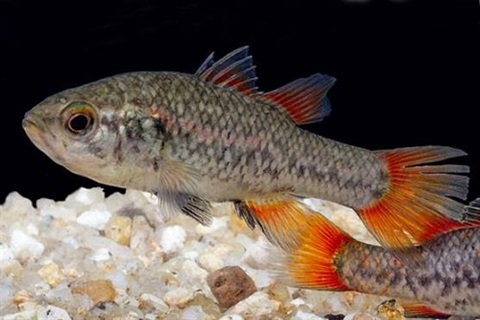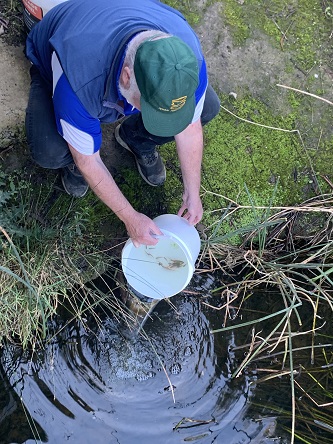Pygmy Perch Release
Published on 26 July 2022

Edendale is partnering with Not-For-Profit “Native Fish Australia” to bring small native fish of Nillumbik and Victoria to Edendale. Our first project with Native Fish Australia is the release of approximately forty Southern Pygmy Perch into the dam. These fish grow to approx. 8cm, love to eat mosquito larvae, are frog friendly and were once common in the Diamond Creek. The dam is already a hot spot for local biodiversity with water bugs, frogs, turtles and variety of water birds making it home so hopefully the fish will thrive and the population increase. We will monitor numbers over time and if successful, we will work with Native Fish Australia and Melbourne Water to help repopulate local water ways.
This and future biodiversity projects will help us support and build resilience into our local eco-systems as impacts from climate change are experienced.
Southern Pygmy Perch
Scientific Name: Nannoperca australis
Size: Commonly 65 mm, to 85 mm
Conservation Status: Common, widespread
Habitat: Often found in small systems with a low flow rate and quiet vegetated areas in streams, billabongs, lakes and even irrigation channels. Not usually found in open water, prefers covered habitats. Often seems to form loose aggregations.
Distribution: Victoria, south eastern South Australia, southern areas of the Murray-Darling basin in New South Wales. Fragmentation of habitat and population is becoming a major concern especially in the Murray-Darling system to the extent that recolonisation of areas where individual populations are lost is being hindered.
Reproduction: Spawns multiple times from September to January, when water temperatures are above 16°C During breeding males are territorial. Female produces between 100 and 1,000 transparent round and non-adhesive eggs which are scattered over plants or the substrate. When fully hydrated, fertilised eggs are 1.2.1.4 mm in diameter. Eggs hatch in 2 to 4 days producing larvae about 3 to 4 mm long.
Diet: Carnivorous, small crustaceans such as amphipods, ostracods and copepods, insects such as chionomid larvae, mayflies, mosquitos and other terrestrial insects. Juvenile fish tend towards planktonic crustaceans whereas adults tend toward terrestrial insects and other larger prey. Ideal fish to put in dams and ponds for mosquito control.
Source : Native Fish Australia - https://www.nativefish.asn.au/
